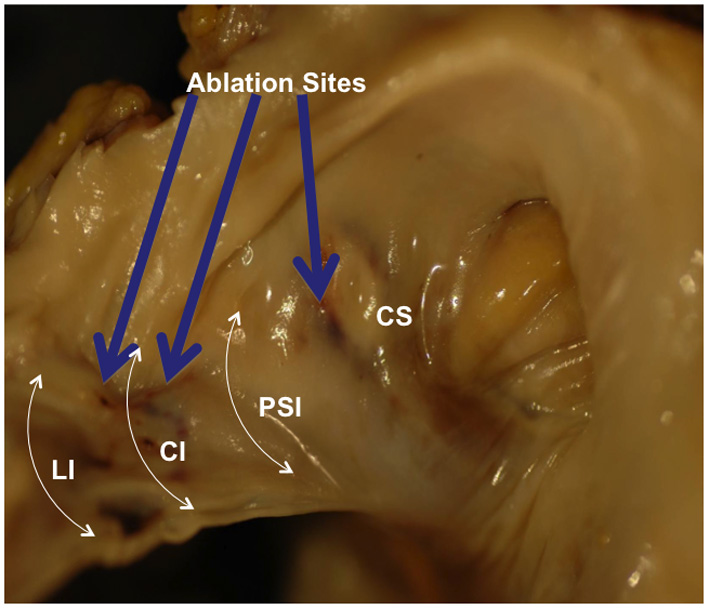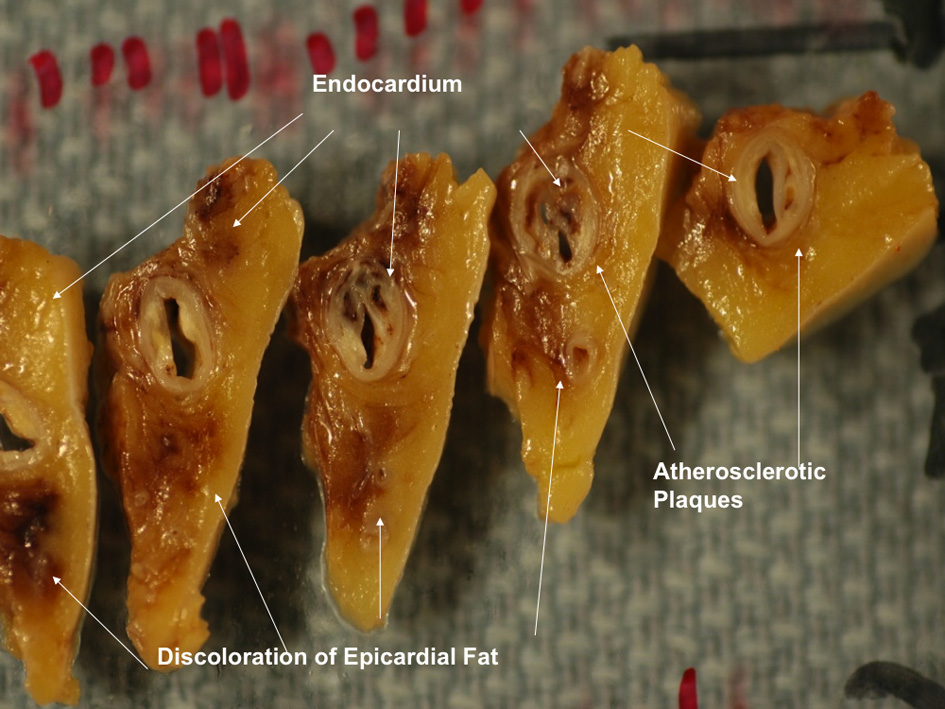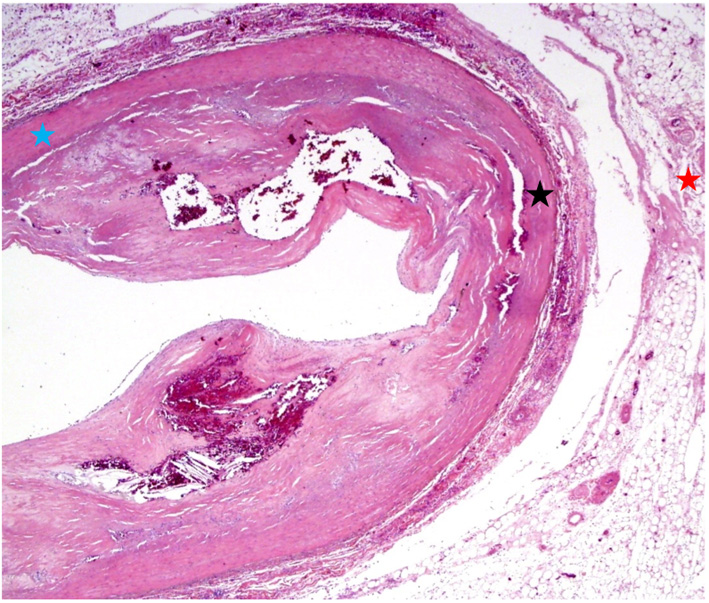
Figure 1. Gross examination of the right atrium shows white area of discoloration along the cavo-tricuspid isthmus region and an area of hemorrhage between the coronary sinus and the tricuspid valve. Three levels of the cavo-tricuspid isthmus are shown: lateral isthmus, central isthmus and paraseptal isthmus. A projected course of the right coronary artery (red line) demonstrates its anatomic relation to the cavo-tricuspid isthmus. CTI: cavo-tricuspid isthmus; FO: foramen ovale; TV: tricuspid valve; CS: coronary sinus; RCA: right coronary artery; TT: tendon of Todaro; LI: lateral isthmus; CI: central isthmus; PSI: paraseptal isthmus.


